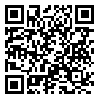BibTeX | RIS | EndNote | Medlars | ProCite | Reference Manager | RefWorks
Send citation to:
URL: http://sjsph.tums.ac.ir/article-1-165-en.html
Background and Aim: Patients with hemophilia and thalassemia are at high risk for hepatitis C virus (HCV) infections. Unscreened blood and blood products are thought to be the most important risk factors in these two groups.
Materials and Methods: Blood samples were collected from 98 thalassemia patients and 74 hemophiliacs in Markazi province. The presence of anti-HCV antibody was tested by a third generation enzyme immunoassay. All ELISA-reactive samples were tested with the confirmatory third-generation recombinant immunoblot assay RIBA. We used a specially designed questionnaire to obtain data from patients and the software package SPSS 11.5 for statistical analysis.
Results: HCV antibody was detected in 5 thalassemia patients (5.1%) and 31 hemophiliacs (41.9%). Anti-HCV positivity in patients with thalassemia was associated with the total volume of the transfusions, splenectomy, and the duration of treatment. In hemophiliacs, seropositivity was significantly associated with the duration of transfusion treatment (P=0.01) and disease severity (P=0.00). The prevalence of HCV antibody in thalassemia subjects dropped from 8.1% to 0% after the implementation of anti-HCV screening in1996.
Conclusion: In Markazi province, the current policy of screening donors for anti-HCV and the strict safety controls on factor concentrates can effectively protect thalassemia and hemophilia patients from HCV infection.
Received: 2006/11/25 | Accepted: 2007/05/15 | Published: 2013/08/11
| Rights and permissions | |
 |
This work is licensed under a Creative Commons Attribution-NonCommercial 4.0 International License. |





